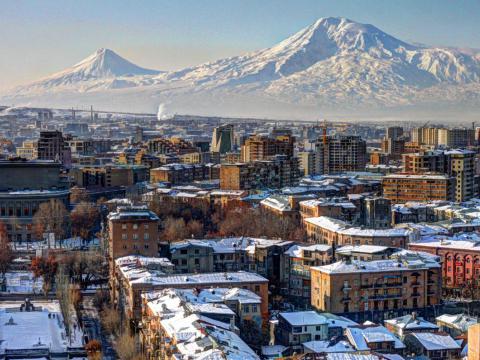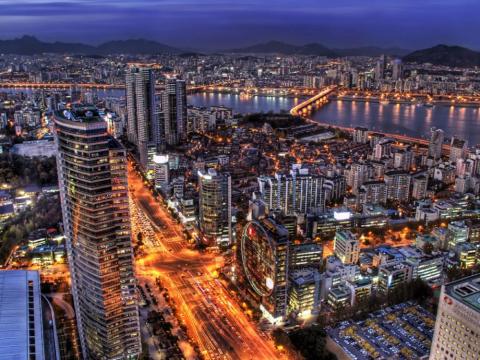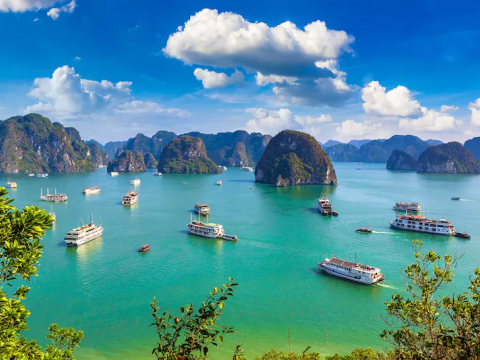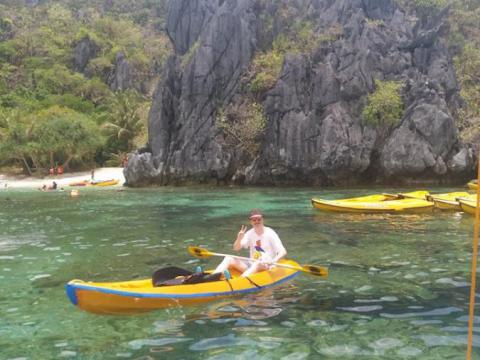Philippines in a Nutshell
The Philippines (Filipino: Pilipinas), formally the Republic of the Philippines (Republika ng Pilipinas), is a Southeast Asian archipelago of over 7,100 islands located between the Philippine Sea and the South China Sea. The islands are largely volcanic in nature and are covered in tropical rainforest and fertile soil, though most of the rainforest has been cleared. Although the terrain varies greatly, many of the coasts have numerous bays and headlands, and many of the larger islands have mountainous interiors. There are also several coral reefs along the coasts.
The climate is tropical, with steady high humidity and high, stable temperatures, so plan on changing your clothes regularly in the sweltering sun. Mountainous regions are an exception to the rule, being temperate with moderately cold temperatures during the cool dry season, which lasts from November to March. During the cool months, frost forms on mountain tops, but there is no snowfall because temperatures never drop below freezing and peaks never rise above 4,000 meters (13,000 ft).
The nation has one of the longest coastlines in the world, with many beautiful beaches and excellent diving. Owing to the many islands, many waves of immigration, and a mixture of foreign cultures — the nation was a Spanish colony from the late 1500s to 1898, then American until 1946 — and much mixing of cultural influences, there is great cultural diversity. It will take decades to see and do everything.
Many locals speak English fluently, and the majority of the rest speak at least some English. Food and lodging are inexpensive, many destinations have excellent facilities, and the people are cheerful and friendly; maybe the simplest way to identify a Filipino abroad is to see who has the biggest smile.
Despite having a population 40 percent larger, the Philippines continues to lag behind its rivals, having received just 8 million tourists in 2018, less than a quarter of Thailand's draw. Western visitors are in the minority; the majority of visitors are from China, Korea, and Japan. The plight of tourism is primarily due to insurgencies and crime, but with common sense, most parts of the country remain peaceful.
The administrative structure of the Philippine government is divided into three top-level regions: Luzon, Visayas, and Mindanao. They consider Palawan to be part of the Mimaropa region, which is administered by Luzon. There are 18 lower-level districts, 80 provinces, 120 towns, and several rural municipalities below that. The barangay — a rural district or an urban neighborhood — is the lowest administrative level, and addresses or directions in the Philippines often include the barangay name.
The nation is plagued by issues such as terrorism, corruption, poverty, and internal disputes. The Philippine government is at odds with Islamic insurgents in Mindanao, as well as communist rebels (New People's Army) elsewhere. Hostilities have spilled over into major cities. Although the Philippines' bureaucracy has reduced red tape, bribery, and undue patronage, some locals still mistrust the government. Crime and illegal drugs are popular, but you are more likely to experience them if you travel to rough areas. Travel to the country has been prevented by Western nations due to safety and security issues.
Despite first perceptions of the Philippines as a relatively developed economy, it is still a developing country plagued by income inequality and poverty. Most Filipinos, whether a fisher, a salesperson, or a fast food crew, struggle to make ends meet on as little as 400–600 (about US$8–12 in 2019). The sosyal (the wealthy) and nouveaux riches, on the other hand, will be seen cruising in their luxury vehicles, living in gated mansions, and sending their children to private schools. Some unemployed people turn to racketeering or criminal activity to make ends meet. Metro Manila, the capital, is infamous for its traffic congestion, and slums can be found in many areas, often in stark contrast to skyscrapers in business districts like Makati. Economic and political centralization, dubbed "Imperial Manila" by critics, continues to be the root of many provinces' economic woes and has fueled demands for regional self-determination. The Philippines, like the rest of Southeast Asia, is plagued by unregulated growth, which leads to urban sprawl, a shortage of pedestrian and wheelchair-friendly facilities in many areas, and uncollected garbage.
Last modified on 04/30/2021 - 07:15
Towns
Currently there are no articles about Philippines.
Currently there are no trip reports about Philippines.
Currently there are no photo of Philippines.
Currently there are no videos of Philippines.








